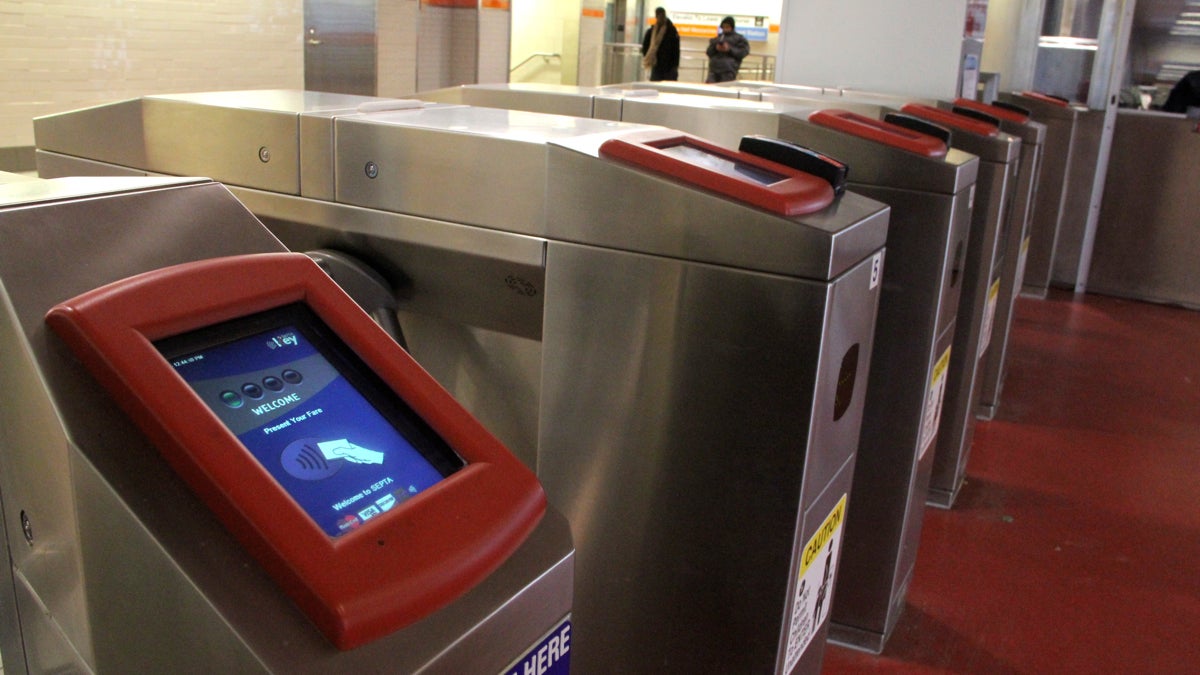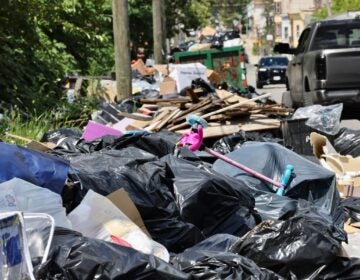SEPTA says weather partly explains why ridership is down
Listen
SEPTA swipe turnstiles at Dilworth Plaza. (Emma Lee/WHYY)
Americans are riding public transportation more than they have in half a century. According to the American Public Transportation Association, ridership reached all-time record highs in dozens of cities during 2014.
There were, however, a handful of places that witnessed ridership slipping: Philadelphia, Washington, D.C., Los Angeles, Miami and Chicago. Why?
SEPTA riders have ideas.
“I ride everything. The sub[way], the bus, and the El, so all of them. They’re always late, behind, and slow,” said daily bus rider Brie Harrison.
Mousa Donzo, thinks tokens are a pain to keep track of.
“I expected it to be in my pocket. But when I got on the bus, [and I had] to put a token in the machine, I realized it was not there. And they didn’t let me on the bus,” Donzo said.
Trips running behind schedule and the inconvenience of tokens are things that Richard Burnfield has been dealing with for decades. He’s SEPTA’s Chief Financial Officer. He says service issues are linked to funding.
“Well, if you look at the history of SEPTA, and I’ve worked at SEPTA for over 30 years, chronically under-funded could be a way to describe SEPTA,” he said.
SEPTA buried itself in debt by taking out hundreds of millions of dollars in loans to keep the system going. In recent years, though, officials in Harrisburg extended SEPTA a lifeline: boosting their long-term funding. SEPTA said it will have nearly double the money to spend on projects this year, compared to last.
Where are those dollars going? To the much-anticipated, and much-delayed, SEPTA Key program. Launch date for the electronic fare card system? “Sometime this year,” is as specific as Leslie Hickman will get.
“And you won’t need to buy a transfer, you won’t need to buy a token, you can use the one card for all of our services,” Hickman said.
Take the elevator to the 18th floor of SEPTA’s Market St. headquarters and you’ll find its Key program testing lab. A bunch of men tapping on laptops adjusting prototype turnstiles and e-ticket kiosks.
“As a customer, you take your card out, you tap, and you enter our system,” Sam Sulaiman said as the turnstile beeped twice before the doors opened and he walked through.
He’s trying to debug the new technology before the system launches.
When that happens, SEPTA wants customers to cash in all their tokens for money on their SEPTA KEY cards.
So, what will happen to the estimated 13 million tokens in circulation?
“We will have to make a decision as to how we handle the final disposition of tokens,” Hickman said.
Is taking them to a metal scrap yard an option?
“Possible. Or send them to the Smithsonian,” Hickman joked.
Whether they plan to keep them for nostalgia’s sake, or cash them in, riders dropped fewer tokens in SEPTA machines in 2014 compared to 2013.
But, if you take the long view, it’s a different story.
Ten years ago, SEPTA serviced around 300 million passenger trips. In recent years, it’s up by 40 million more trips a year. Of course, numbers fluctuate, but the trend points to more people stepping on the region’s buses, subways, trolleys and trains.
Still, SEPTA CFO Richard Burnfield said last year’s winter chilled the 2014 numbers.
“I can go back and look at the 14 days that there were snowstorms, and on those 14 days, ridership was down. And that was specifically related to the weather, and that resulted in the 2 percent drop,” he said.
But in New York, transit ridership was up 4 percent last year. And in Boston, no stranger to harsh weather, ridership jumped up nearly 5 percent.
Are Philadelphians less willing to brave the weather? Or are city businesses quicker to close shop? Burnfield says it’s likely … a wintry mix of both.
WHYY is your source for fact-based, in-depth journalism and information. As a nonprofit organization, we rely on financial support from readers like you. Please give today.




